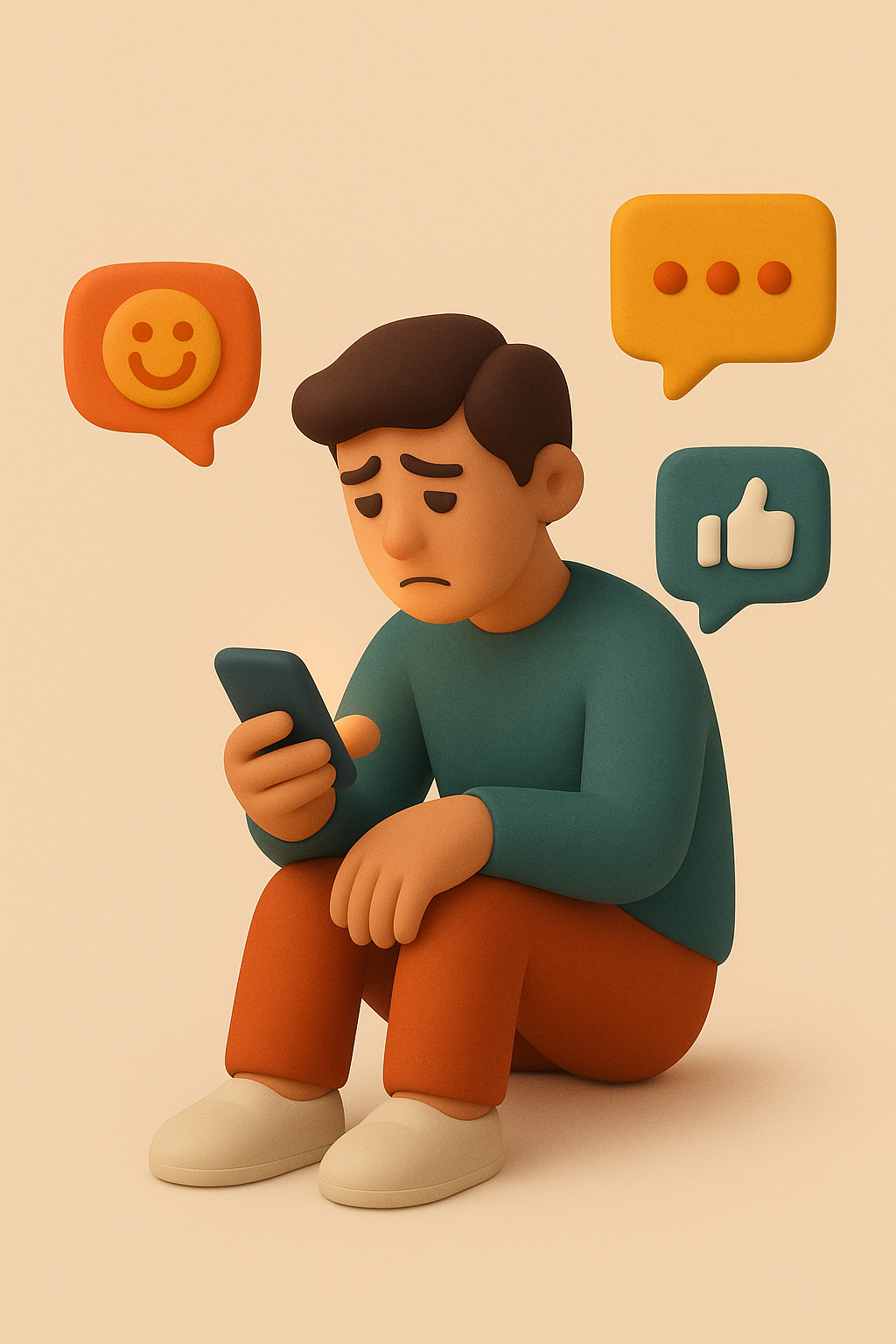
The internet was supposed to bring us closer together. And in many ways, it has. We can check in on friends, meet new people from across theworld, and instantly share what’s going on in our lives. But as our screen time has increased, so has our sense of disconnection.
Reports across the US, UK, Canada, and Australia show a rise inloneliness across all age groups. It’s not just young people or older adults. Even those in the middle of life, juggling jobs, families, and feeds, say they often feel emotionally on their own.
So what’s going on?
Not all social interaction feels fulfilling. Liking a post, sendinga thumbs-up, or reacting to a story can feel like checking a box, not likereally being there for someone.
There’s a big difference between:
· Shallow contact: quick messages, emojis, scrolling
· Deep connection: feeling seen, heard, and understood
The internet is great at fast contact. But deep connection takes something more: time, attention, and mutual care.
We all want to feel like someone gets us. But scrolling through feeds rarely gives us that feeling.
When you’re always reachable, people assume you’re always connected. But being online doesn’t mean you’re okay.
You can be flooded with notifications and still feel like no one truly knows you. You can post a selfie and still feel unseen.
That disconnect between how present we seem and how alone we feel is where digital loneliness grows.
Without noticing, certain online habits can make us feel even more alone:
· Endless scrolling without interacting
· One-word replies or ghosting
· Feeling nervous about voicecalls or video chats
· Holding back what we really feel to keep things “light”
None of these things are wrong. They’re just signals. And they might be telling us: I need more.
During lockdowns, digital life became our main way to stay close. And for some, that worked. But for many, it created a new kind of distance.
Even now, lots of people say they feel out of practice with real connection. It’s easier to send a meme than to say, “Hey, I’m struggling today.”
That’s okay. But it also means we might have to find new ways to reachout. Ways that feel real, even if they’re still digital.
In many cultures, we’re taught to keep things upbeat. To push through. To stay productive. But inside, most of us crave honesty. We just don’t always know where to put it.
Online spaces can mirror that. Vulnerability might feel awkward. Or like something that doesn’t belong on the feed.
So we bottle things up, even if we’re messaging all day.
If you’re feeling lonely while constantly online, you’re not broken.You’re human.
Here are a few low-pressure ways to feel more connected:
Try not to multitask every chat or call. When you talk to someone, give them a real moment of your time - your undivided attention. Even if it’s just for two minutes.
Instead of “how are you?”, try “what made you smile today?” or “anything on your mind right now?”
Reach out when you think of someone. You don’t need a big reason. A simple “just saying hi” can mean a lot.
You don’t have to write an essay. But saying “today felt kind of heavy” or “I just needed to tell someone this” can shift the tone of a conversation.
If talking to people feels too much right now, Nestwarm is here. No pressure or smalltalk. Just someone to message when you need a space.
Connection isn’t always deep talks or heart emojis. It can be shared silence. A joke. A text you don’t have to answer right away.
In a world that’s always buzzing, choosing softness and honesty can feel like a small act of rebellion.
Being online doesn’t guarantee closeness. But how we showup - online or offline - makes all the difference.
Feeling lonely doesn’t mean you’re doing something wrong. It means you’re wired for connection and maybe not getting enough of the kind that counts.
Nestwarm exists for moments like this. For the space between the pings. For when you want to write something down, and maybe feel a little less alone while you do.
No pressure. Just presence. We’re here when you want to write.
